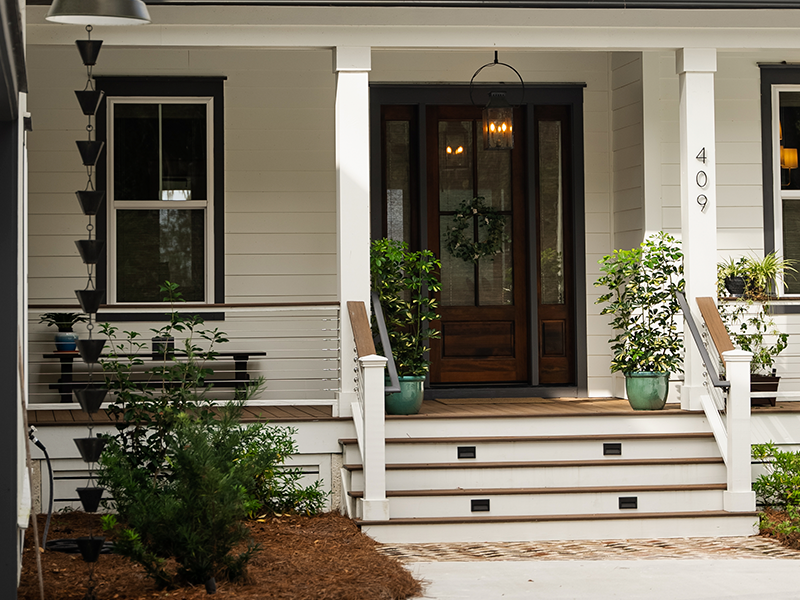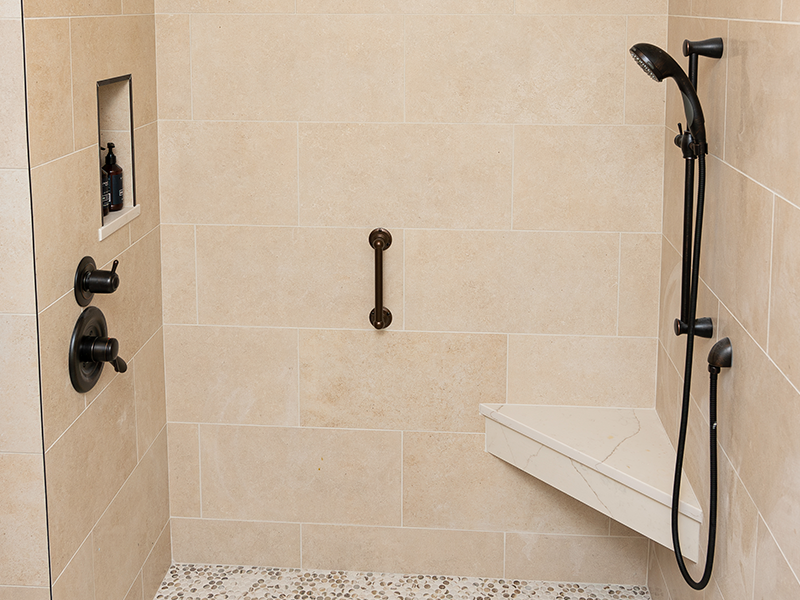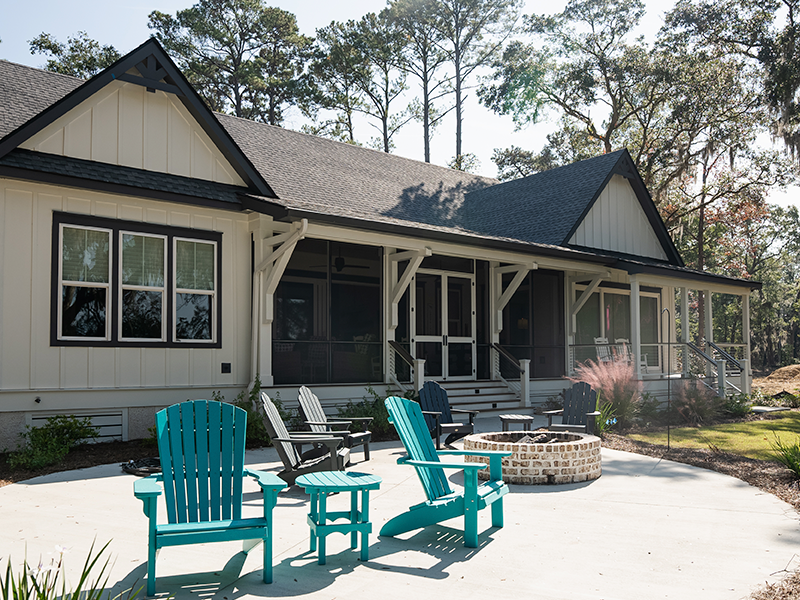Aging in Place: Designing a Home for Every Stage of Life

The concept of “aging-in-place” has gained significant traction in recent years, reflecting a growing desire among individuals to remain in their homes as their physical needs change with age. And with multi-generational households becoming more common, custom homes afford new homeowners the flexibility to accommodate a wide variety of needs, even as time goes by.
A lot of thought goes into what can make for an ideal home. Space, functionality, budget, materials, and much more are points of consideration when designing a residence. But one concern that may not be obvious to many is the need of a home to cater to the evolving needs of its owners.
Aging-in-place concepts put structural flexibility at the forefront of design, supporting graceful aging and promoting independence. It’s not about committing to a specific floorplan. Instead, building a home with aging-in-place as a focus means building a home that can be remodeled or renovated with relative ease.
When building a custom home, aging-in-place is just one of many design interests, but it’s important to consider as many angles as possible. Let’s explore some key considerations for creating a home that adapts to every stage of life.
Accessibility and Safety: Prioritize Ease of Movement
As we age, mobility can become a challenge. Prioritizing accessibility and safety throughout your home is worth considering. In general, open floor plans cater to aging-in-place design principles. They allow for a lot of customizability in future remodeling, like adding ramps where necessary or installing safety devices as needed.
Wider doorways (approximately 36 inches) allow for eventual accommodation of wheelchairs or walkers, ensuring ample turning space in hallways and bathrooms. Using lever handles instead of traditional door knobs will make doors easier to operate for individuals with limited hand strength.
Single-Level Living: Minimize Stairs and Steps
Navigating stairs can become increasingly difficult as our needs change. If aging-in-place is a concern, opt for a single-level home or consider including enough space that you can one day install a stairlift or an elevator.
If stairs are unavoidable, make sure that they are well-lit, have a sturdy handrail, and can feature non-slip treads.
Bathroom Modifications: Enhance Safety and Comfort

The bathroom is a high-risk area for falls, particularly for older adults. Safety features such as walk-in showers with built-in seating, non-slip flooring, handheld shower heads, and grab bars can be a huge help when mobility is a concern.
You can also consider installing a comfort-height toilet, which is easier to sit on and stand up from.
Kitchen Adaptations: Promote Independence
The kitchen is the heart of the home, and it’s important to ensure it remains accessible and functional for individuals of all ages and abilities. Ease-of-access is one of the most important design elements here.
Pull-out drawers and shelving can make life easier, as well as appliances with user-friendly controls. Something as simple as D-shaped cabinet handles can make a storage area more accessible to those with a weaker grip.
Be mindful of things like counter heights; it may not be an issue now, but long-term care may require lower heights for wheelchair users. Laying out the kitchen floor plan so that the sink is close to the stove will limit mobility challenges while cooking.
Good task lighting – especially in cabinets – also impacts ease-of-access. Being able to see appropriately in otherwise dim spaces is good for all ages. And installing non-slip flooring in the kitchen can make that area, usually a bit hazardous, a little safer.
Lighting: Illuminate Your Path
Proper lighting is essential for safety and well-being, particularly as we age. Ensure all areas of your home are well-lit, including hallways, stairways, and outdoor spaces. Motion-sensor lights can be a game changer – put them in key areas to enhance safety, convenience, and electrical usage.
In a multi-age home, you can also install dimmer switches to adjust lighting levels based on individual needs and preferences.
Technology: Try Smart Home Solutions
Not all solutions require changes to your floorplan, but keeping in mind your electrical needs is important. Installing smart home technology can significantly enhance independence and quality of life for older adults. You can incorporate voice-activated assistants to control lighting, temperature, and entertainment systems.
Smart locks and security devices can also be helpful, along with medical alert systems. Individual contact systems, which use motion detection to monitor parts of your home, are affordable, easy to install, and manageable.
Community and Connection: Foster Social Interaction

Social interaction is vital for overall well-being, particularly as we age. Design your home to encourage social engagement and connection. Clever use of lawn pathing can be helpful here. Use it to create a “funnel effect” by narrowing your yard’s path as it closes in on your front door. This kind of design element creates a feeling of natural flow that directs traffic to your home.
Consider installing a community garden in the backyard or creating communal seating areas. Landscaping features, such as fire pits, come in handy here as focal points for gathering. And it may seem strange, but installing a book exchange in your yard can be a great way to share interests and encourage friendship.
Leave Room For A Remodel
Designing a home for aging-in-place requires careful planning and consideration, but it’s no surprise that other concerns may be more pressing. What’s prudent thirty years from now may not be a top priority when you’re just starting to build a house.
But aging-in-place is about creating a home that supports your independence, comfort, and well-being throughout every stage of life. Even if you don’t incorporate the above design principles into your home’s initial construction, it may be worth considering keeping the design flexible.
When building a custom home, you have lots of options and many priorities. Wellness elements, for example, are important and should be considered when building a home, too. But preparing for the future is never a bad idea.
Contact Icon Construction:
Call us at 843-814-0094 or email us at sam@lowcountryicon.com